Convergence (Toe-in)
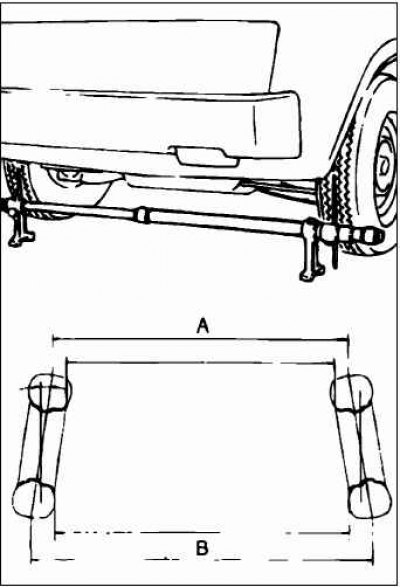
Using a special ruler, measure the amount of convergence of the steered wheels. Convergence = B - A
Recommended value: Center of tire tread: 1±2mm Toe angle (on the wheel): 0° 03+05.
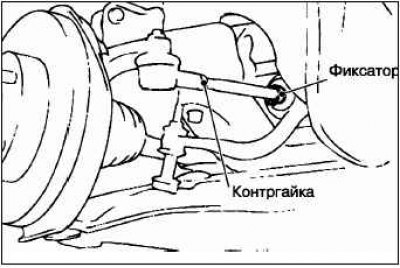
Adjust the toe-in by first removing the lock and unscrewing the lock nut by turning the turnbuckles of the right and left steering rods in different directions, but by the same amount.
Note. The wheel alignment will tend to be negative if the left turnbuckle is rotated towards the front of the vehicle and the right turnbuckle towards the rear of the vehicle.
Install retainer and tighten locknut to recommended torque. Recommended tightening torque: 52 + 2 Nm.
Make sure the wheel alignment is within the recommended range.
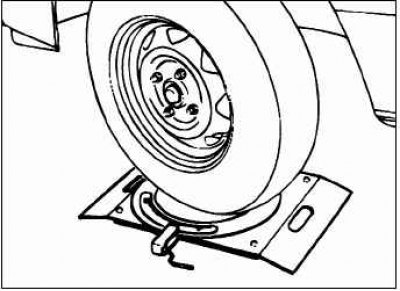
Using the turntable, check that the steering angle of the steered wheels is within the recommended value.
Recommended value:
- inner wheels: 34°5'±1°3'
- outer wheels: 29°2'
Convergence angle (Toe-out) when turning the car
To check the condition of the tie rods, especially if the car has been in an accident (or is supposed to have visited), it is highly recommended to check the toe angle (Toe-out) when turning the car, in addition to the regular check of wheel alignment. Perform this check on both left and right turns.
Recommended value: angle of convergence (Toe-out) when cornering (for the outer wheel when the inner wheel has an angle of 20°): 22°0’ ±1°30’.
Collapse, caster (longitudinal angle of inclination of the kingpin), the transverse angle of inclination of the kingpin
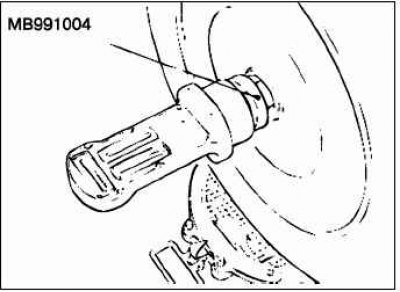
- Camber: – 0°10'±30'
- Castres: 3°15'±30'
- KPI: 12°25’ ±1°30’
Note. The difference between the right and left wheel should not exceed 30'.
The longitudinal and transverse angles of inclination of the kingpin are set at the factory and cannot be adjusted.
For cars with aluminum rims, fasten the reflectors by the drive shaft shank using the MB991004 clamp. The tightening torque of the special tool must be equal to the tightening torque of the drive shaft nut (245±29 Nm).
Attention! To avoid damage to the wheel bearing, do not allow the wheels to be subjected to the weight of the vehicle with the nuts securing the drive shaft loose.
Rear wheel alignment (Toe-in)
Recommended value: in the center of the tire tread: 3±2 mm.
Convergence angle (on the wheel): 0°08’±0,5’.
Make sure the camber adjustment has been made prior to the toe adjustment.
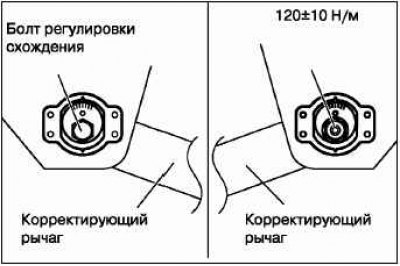
To adjust the toe-in of the rear steered wheels, it is necessary to turn the toe-in adjustment bolts (adjusting lever mounting bolts on the inside of the body).
Left wheel: turn the bolt clockwise (+) - convergence increases.
Right wheel: turn the bolt counterclockwise (–) - convergence increases.
Note. The scale has a graduation of approximately 2.6 mm (convergence on one wheel is equivalent to an angle of 16')
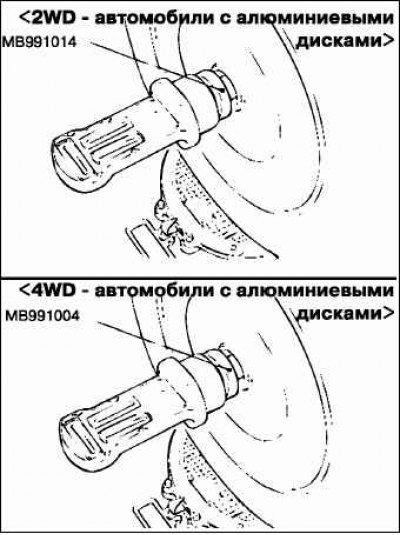
Recommended value: -0°40±30' (difference between right and left wheel: no more than 30')
Note. The camber is set at the factory and cannot be adjusted. For 2WD vehicles with aluminum rims, attach the reflector to the axle of the trailing arm using the special tool (MV991014). Tighten the special tool with a tightening torque equal to the tightening torque of the trailing arm axle 175±25 Nm. For 4WD vehicles with aluminum rims, fasten the reflectors by the drive shaft shank using the MB991004 clamp. The tightening torque of the special tool must be equal to the tightening torque of the drive shaft nut (245±29 Nm).
Checking the play in the front wheel bearings
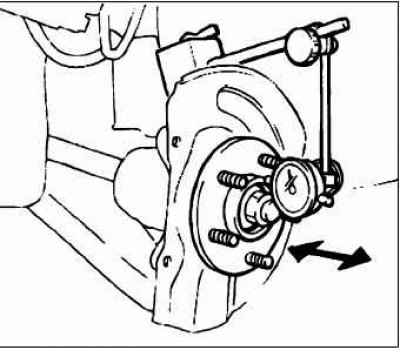
Disconnect the front wheel brake caliper and, without disconnecting the brake hose, hang the caliper close to the wheel hub.
Remove the brake disc from the hub.
Attach the dial indicator as shown in the illustration. Measure the end play in the hub bearing by moving it back and forth.
Limit value: 0.05 mm.
If the axial play exceeds the allowable value, replace the hub assembly.
